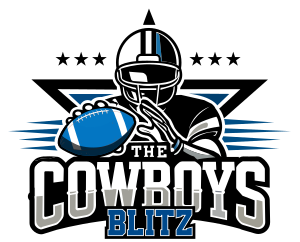Okay, you know it's getting pretty sparse in terms of things worth spending time talking about when everyone calling into Nick's show gets in on the first try, and in fact, they can't even fill an entire show with callers... right? Or, today, over on the Fan Zone, the only non-leftover thread is something about some retired player hating the Cowboys too much to be supportive of his son's team were he to be drafted by said team.
So, with that context, I find no further room for any apology here... this thread legitimately arguably is the most compelling thread on this entire site today. (Legitimately arguably... though, sure, maybe I can't say "proudly."

)
It's made all the more relevant as we see college basketball's feature event so decayed from what it was prior to one-and-done NCAA legislation that effectively has so extracted the upper tier, significant talent from that showcase. And though one may have read the news that NBA is deactivating the Ignite team as suggestive that they're giving up on making in-roads to the post-high-school market place... I'd caution that one might be smart to think the converse is actually true. That is, having a single team composed of ripening talent is recognized as a too little, not too much. Let's realize, only 5 players are on the floor at any one time, of course, and so players at that stage recognize that what they need as much as development in practice time is development during game time... and a lot of talent necessarily gets excluded if there's only one team in the G-League that is getting populated with green fruit. Look for, then, rather an expansion of opportunity for green fruit to play in G-League now, rather than it all being funneled through one roster.
This is part of the paradigm that shapes the model presented here. 24 teams. 30 players per team. If you get drafted and assigned to a team, you're going to be on the field.
A lot. Fewer games, yes, but more minutes. And more time between games on-average, so that you're more likely to be able to get over the minor injuries between games, and get to play. You're going to get paid well for someone just out of high school, because the NFL can afford that, because the NFL knows how to generate money, and especially TV money. And you're not going to have any other obligations, like going to class and making grades. You can. You'll have sufficient time off to be able to earn some college credit, if that's what you want to do, but it's not an obligation. And no NCAA rules that mandate you can't be drafted until some certain time.
So, 720 of the best high school prospects... not all, but a lot of the upper tier highest caliber talent... end up taking this new, and tangibly more efficient, route to possibly getting drafted.
And even the college game benefits. Why? Because most of the ones going to college to play football are the ones who truly want to go to college, first, and play football, second. No more, or a whole lot fewer anyway, players abandoning their team in bowl season out of a sense that they need to protect their health. Some, and maybe a whole lot fewer players deciding to transfer for football-career reasons rather than academic-related (and thus, normal career) reasons. And costs associated with NIL, naturally severely reduced because most of the upper tier "names" who may have otherwise represented expense to the school, aren't so elite that they are considered great investments in that way... to the contrary, the NFL is effectively assuming those costs, now, and again, they have a revenue stream that allows them to cover that effectively.
In that scenario, the romance of the college game gets restored. Fans care again, because the players on the field aren't capitalistic mercenaries who have no plausible actual allegiance to the school for whom they play football.
Here we go. Bookmark this thread, and plan to revisit 10 years from now. This model won't be the exact model used, but the motivations driving something like this evolving are pretty extant right now. The only thing that could sabotage this is if, somehow, the SEC and the Big Ten prove to figure out some new system that works for all concerned. Me, I think that if that were a possibility, it would have already emerged. They're racking their brains for a solution, but time says the smart money is on pessimism for that, and in turn, optimism for the NFL to step into the void and do something that, just logically, helps the entire ecology to see improvement.








